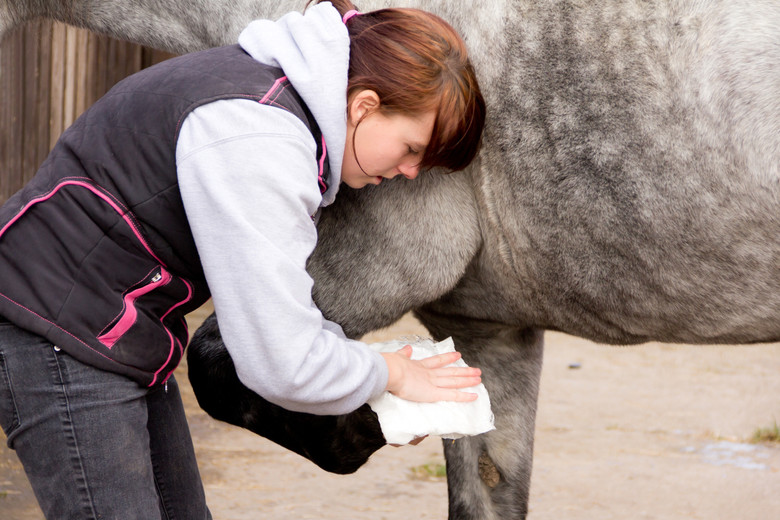Equine First Aid – Being Prepared
Posted by rachael on 21st Oct 2020
Equine First Aid – Being Prepared
It’s a rare horse that never suffers an injury of some kind. Horses are active, curious, and social, which means they can run into hazards or bang into each other. Here are our Equine First Aid tips. It's all about being prepared!The following should be at the top of the list for any emergency:
- Veterinarian phone numbers
- Insurance policy information and contact numbers
- A treatment authorization document
- Access to the horse’s health records
- On-demand access to a horse trailer
When to call the Vet
For anything more significant, you will want to get a veterinarian involved as soon as possible. In those cases, your first concern is making sure the situation does not get worse. This may involve getting and keeping control over the horse while someone summons the vet. In the worst cases, you may need to take some medical steps, usually to control bleeding. Below we also list the kit you will need for these more serious situations.Types of Injury
First, let’s determine which kind of injury you’re addressing. A general rule of thumb is if blood is flowing quickly or squirting, it’s serious. Most other serious situations involve injuries or conditions that do not have a visible cause, like colic, acute lameness, or stiffness. In these cases, what you see are the symptoms, not the cause. Punctures are a special case: While small and perhaps with no bleeding, a puncture can represent a serious internal wound. Any puncture worse than a nail stuck in the outer hoof should be brought to a veterinarian’s attention.Checklist
For less serious injuries, a basic first aid kit should include:- An equine first-aid book
- Sterile cotton roll
- Sterile contact bandage
- Sterile stick to self-wrap such as Vetrap
- Sterile gauze pads, assorted sizes
- Sterile gauze wrap
- Adhesive tape
- Leg wraps
- Sharp scissors (for cutting bandages and tape)
- Digital rectal thermometer
- Small jar of petroleum jelly or other lubricant (to help insert thermometers)
- Antiseptic solution
- Latex gloves
- Hemostats or tweezers (to remove splinters or ticks)
- Flashlight and spare batteries (for examining wounds in dark spaces, like stalls)
- Permanent marker pen (to record data to share with the vet)
- Pliers (to pull nails)
- A spare hoof pick (so it’s handy)
Summary
With these, you should be able to address any minor wound or condition and collect the information your veterinarian will need to determine if a visit is advised. Remember: You should always contact your vet in any case to assure some health consideration does not go overlooked. Your call may or may not result in a visit. But it will undoubtedly yield a good list of next steps to assure your horse heals as quickly as possible. As noted above, more serious emergencies require professional attention. Your goal is to stabilize the situation until the vet arrives. The following items will help you do that:- Saline solution (for cleaning wounds and rinsing eyes)
- Short length of garden hose (for use through the nostril to keep the airway open)
- 5’ length of 6" diameter PVC pipe cut in half lengthwise (for an emergency splint)
- Clean bath-size towel for large wound compression or as a surface to lay out first aid materials in the field
- Cold pack to reduce swelling



